 A Short Film Screening with Filmmaker and Ecologist Sharon Shattuck A Short Film Screening with Filmmaker and Ecologist Sharon Shattuck
***IN MANHATTAN at The Cornelia Street Cafe
as part of the BODY AS FUNHOUSE MIRROR series***
Date: Sunday, February 26
Time: 6 PM
Admission: $10 (includes a drink!)
Presented by Hollow Earth Society and Ted Enik
Originally presented by Morbid Anatomy
Parasites challenges the notions of body, friend, inside, and out. The word “parasite” comes with loads of vile connotations, but in nature, nothing is purely good or evil. In the 27-minute experimental documentary Parasites: A User’s Guide, Shattuck embarks on a journey to decode some of the most misunderstood creatures on earth. The dramatic rise in autoimmune diseases, asthma, and allergies since the turn of the last century has confounded scientists, but some researchers think they have uncovered the key to controlling the skyrocketing rates: tiny parasitic worms called helminths… Through the seeming oxymoron of the “helpful parasite,” Sharon questions the nature of our relationship with parasites—and suggests a new paradigm for the future.
The screening will be followed by a Q&A with director Shattuck and some friends: Radiolab’s Pat Walters, Scientific American’s Ferris Jabr, helminth researcher Dr. P’ng Loke, and two real life “users” of helminthic therapy. Please join us for the event, and if there are more questions for the panel than the performance can accommodate, we’ll move upstairs to the cafe afterwards!
Parasites: A User’s Guide (long trailer) >>
Sharon Shattuck is a producer/director/animator with Sweet Fern Productions, the production company she founded. Her previous experience includes work with the Smithsonian Institute, the Field Museum, NPR’s On the Media, and internships with WNYC’s Radiolab, and the BBC World Service/Stakeholder Forum. She has an undergraduate degree in forest ecology and a graduate degree in documentary and broadcast journalism. Her first film, the short Parasites: A User’s Guide (2010), was an official selection of the Traverse City Film Festival, the Camden International Film Festival, the Michigan Film Festival, and the International Science Film Festival. In addition to her work with Sweet Fern, she is a member of the creative team at Wicked Delicate Films.
Parasites: A User’s Guide was presented at Observatory in Brooklyn by Morbid Anatomy in 2010.
***
About the series:
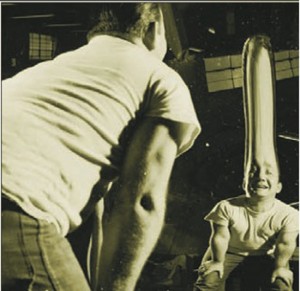 Cornelia Street Cafe and Observatory present a series of Observatory talks in the great borough of Manhattan: BODY AS FUNHOUSE MIRROR: Cultural Reflections On The Human Form. These talks will introduce Observatory to a new audience and give presenters the opportunity to update their work. Cornelia Street Cafe and Observatory present a series of Observatory talks in the great borough of Manhattan: BODY AS FUNHOUSE MIRROR: Cultural Reflections On The Human Form. These talks will introduce Observatory to a new audience and give presenters the opportunity to update their work.
Produced by Wythe Marschall and Ted Enik. Originally produced at Observatory by Morbid Anatomy Library’s Joanna Ebenstein. Thanks to our hosts, Cornelia Street Cafe, and our presenters: Amy Herzog, Sharon Shattuck, and Mark Dery.
 New theatrical works by Ariel Stess & Claire Moodey New theatrical works by Ariel Stess & Claire Moodey
Date: Thursday, February 9
Time: 8:00 PM
Admission: $5
Presented by the Hollow Earth Society
The Hollow Earth Society is proud to host two new multimedia explorations of our intimate relationships with objects and ideas:
Spectral Findings, a theater concert, reanimates Goethe’s scientific findings on light and colours through Faust and “Die Erlkonig.” This experiment in chamber performance is a passionate and poetic narrative essay in which colored shadows and chromatic aberrations leave gentle souls prey to the work of devil. How do we see and what? In seeing, we fall. In falling we are transformed; visions shift. Mingling the intimate chamber music of Franz Schubert, scientific puppetry, and romantic devilry, one is left to wonder if seeing is believing, can we choose what to see? Constructed by Claire Moodey in collaboration with Jonah Rosenberg, Maxwell Cramer, and Abigail Lloyd.
Larger Objects by Ariel Stess charts the non-journey of two dutiful gentlemen. As they reflect on the objects of their affection, they find themselves intertwined through painful positions, misshapen dreams, and shifting memories. There is a woman too, somewhere, and she may need their help. The past, present, and impossible collide in this twisted, tedium. And something has been broken… ribs… twigs… More?
 LARGER OBJECTS CAST: LARGER OBJECTS CAST:
Ariel Stess is an Astoria-based playwright, performer, and director from Santa Fe, NM. She holds a BA from Bard College; MFA in Playwriting from Brooklyn College. Recent and upcoming plays: The Only Girl in the Hot Tub (Geraldine Page Salon, dir. Barbara Harrison), He Ate Quietly into the Wall (Foxy Films, Oct. 2011; Geraldine Page Salon, Sept. 2012), Highlights in Hollywood (East 13th St. Theatre, dir. Sarah Rasmussen), The Lock and Door (Dixon Place, Jan. 2010; Bushwick Starr, April 2012), Prowlers in the Night (Bard College, dir. May Adrales), and The Waiter (Bard College).
Sam Stonefield holds a BA from Bard College where he received the Ana Itelman Award for Directing. He directed Farmyard (Kroetz), Cowboy Mouth (Sam Shepard & Patti Smith), and makes performance installations. He has worked with Theodora Skipitares (Trojan Women), JoAnne Akalaitis (Bacchae; Jump) and Daniel Fish (KFC). Recently, he fabricated Daniel Arsham’s decor for MCDC’s final “Event” at the Park Avenue Armory. He’s currently the Assistant Director on Eric Schorr’s Tokio Confidential at Atlantic Stage, dir. Johanna Mckeon. samuelstonefield@gmail.com
Maxwell Cosmo Cramer is a Brooklyn-based stage artist and co-founder of the performance group EGG. As director: Touching Theater Feelings (WAXworks/Triskelion) I’m Miserable But Change Scares Me (Dixon Place). As producer: Voice and Vision Theater 2011 ENVISION Retreat & Lab (Bard College/The Women’s Project). As performer (upcoming): Mother, Goose, and Grimm (Little Theater at Dixon Place), Boy Show (14th St. Y), Gray Notebook (Bushwick Starr/Target Margin Lab). Past work: (NOLA Fringe), Relative Value (3LD), A Week at the NJ Shore (Dixon Place & touring), Tydrus the Twit (The Tank), Hamlet (Full of Noises), HIM (walkerspace). superword.tumblr.com
Nic Grelli – Regional: Honey Brown Eyes (SF Playhouse-West Coast Premiere, Theatre Bay Area Editors’s Pick), Superior Donuts (Dorset Theatre Festival). NYC: School Night (Ensemble Studio Theatre Marathon), The Un-Marrying Project (Purple Rep), Saturn Nights (Incubator), Ampersand (NYC Fringe). Upcoming: Magic Trick (Culture Project-Reading), Animals Commit Suicide (Teranova Collective-Workshop). Short films: “Filthy Gorgeous” and “Adopting Skins.” Nic has worked extensively with Labyrinth Theatre Company and is proud to be a producer, camera man, and creative contributor to the webseries Jeesus Freaks. Check it out at www.makelovejackson.com. Training: NYU/Tisch and Maggie Flanigan. Proud member of AEA.
SPECTRAL FINDINGS CAST:
Claire Moodey is a Brooklyn, NY based theater artist interested in exploring the power of metaphor, narrative, and dream-like association to synthesize information about ourselves and the world. Recent credits include a radio play silent movie, exploring the mapping of consciousness at Theater for the New City’s Dream Up Festival and the NOLA Fringe (creater, director), Whatever Happened to Baby Jane at the HOWL Festival (lighting and video design), and John Kelly’s The Escape Artist at P.S. 122 (video performance, PA). On February 13th, her short play Mother, Goose, and Grimm will be presented at Dixon Place as part of Little Theater.
Jonah Rosenberg, musical direction/piano, is a Brooklyn, NY based pianist, composer and sound designer striving to construct intuitive music. Jonah studied classical guitar and jazz piano at SUNY Stony Brook. Jonah has composed music for modern chamber ensembles, electro-acoustic ensembles, multi-media theater works, jazz groups, rock and hip hop. Jonah has performed, led and composed for groups with Blaise Siwula, Ray Anderson, Kevin Shea, Martin Loyato, Janie Cowan, (saxophonist) Marcus Miller, Lisa Dowling, Aleks Karjaka and others. He is a third of the musical collaboration Lions For No Reason, the Managing Director at Outpost Artists Resources and curator of the Vectors: Contemporary Music Series.
Abigail Lloyd, set and costume design, lives in Brooklyn and loves building sets for theater. She also builds furniture and other objects from steel. When she’s tired, she makes digital prints with Photoshop and draws cartoons. Abigail is interested in slow processes, intimacy and collaboration. Please surf www.abigaillloyd.com for more.
Maxwell Cosmo Cramer, dramaturgy,
 An illustrated lecture by artist Alastair Noble on the ancient civilizations of darkest Peru An illustrated lecture by artist Alastair Noble on the ancient civilizations of darkest Peru
including Llhuros and the stone engravers of Ica
Date: Friday, February 10
Time: 8:00 PM
Admission: $5
Presented by the Hollow Earth Society
Recent evidence has emerged from archaeological sites around Lake Titicaca Peru that Llhuros—thought to be a fictional civilization contrived by artist Norman Daly—actually existed and thrived in this region centuries ago. Likewise, the ancient engraved stones of Ica Peru reveal a civilization that lived concurrently with dinosaurs and were knowledgeable in sophisticated medical practices long before western discoveries, according to researcher Dr Javier Cabrera.
Alastair R. Noble is an environmental/installation artist and printmaker, his cross-disciplinary practice engages in contemporary cultural issues. Although originally from the UK, he has lived and work in New York City for over 30 years and has exhibited extensively both nationally and internationally, including in Peru, Chile, Bulgaria, UK. His practice is a response to architecture and the natural environment and investigates particular sites in the context of literature, poetry or philosophical texts by authors such as Mallarmé, Marinetti, Mayakovsky, Wittgenstein. The Library of Babel and On the Exactitude of Science by Jorge Luis Borges have been the subjects of his recent projects, which he transposed into labyrinthine maps of the mind and landscape. Additionally he writes on sculpture and architecture for Sculpture magazine and journals. He has taught and lectured at numerous colleges and universities.
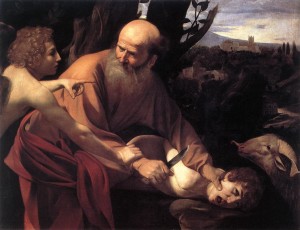 A class facilitated by Jonathan Basile A class facilitated by Jonathan Basile
Date: Tuesday, January 17
Time: 8 PM
Admission: free
Presented by The Hollow Earth Society and The Public School New York
Note: everyone is welcome, whether or not you attended the first session of “A Crossing Without Borders.”
What is death? How does our being mortal shape the possibilities of our cognition and our desire? How should we live in order to come to terms with the term of life, and how does our orientation towards a good death become an art of living?
How does the history of thinking about death shape our understanding of these possibilities, and how do the cultural and other differences surrounding the treatment of death play a part in constituting those very differences—the demarcations of ethnicities, nations, religions, genders, etc.—all the lines drawn on this side of the division between life and death? What does thinking about death in general reveal to us about death in our culture—about our medical industry, about our political furor over “death panels,” about a culture industry obsessed with the equation of youth and beauty, for example?
We will discuss these themes as they are developed in two of Derrida’s major works on death: The Gift of Death and Aporias. In all of our thinking about life in this world, about responsibility, authenticity, temporality, finitude, or mortality, for example, it seems that we always surreptitiously introduce some infinite beyond into the constitution of the here-below, a transcendence that may be utterly unknowable despite our complete reliance
on it.
It has gone by many names throughout history: the Form of the Good, God, the unnameable possibility of the name, the Unconditioned, the Inverted World, Being, Differance, or the secret; we will consider what it would mean to nickname it “Death.”
Reading Assignment:
Aporias – Chapter 1
Recommended Additional Reading:
Aporias – Chapter 2
Jonathan Basile is a volunteer with the Visiting Nurse Service of New York, visiting hospice patients and their families. He currently studies at Brooklyn College, working towards an MFA in Creative Writing. This past summer he organized a series of discussions on death in Western philosophy through The Public School New York, focusing on the work of Plato, Hegel, Heidegger, Levinas, and Derrida.
Writing Assignment
Most every representation of death throughout Western thought has sought to offer a vision of death that could be incorporated into one’s sense of responsibility in this life, into one’s sense of being a free agent, accountable for one’s own decisions and their consequences up to death and beyond. Such representations present certain paradoxes for human beings laboring under them, not the least of which would be the attempt to bring death under our control as something we could actively will and take responsibility for, despite it’s seeming to always take us by surprise, unawares.
For example, the Christian representation of death as a final judgment and afterlife as an infinite reward or punishment for actions in this life attempts to make sense of the infinite responsibility the Christian adherent feels as a result of her original sin, and offers a death that is a complement to the life of sacrifice she should lead (storing up her treasures in heaven, knowing all the while that a Father who sees in secret will reward her).
Try to write your own representation of death or the afterlife. Keep in mind what sort of an idea of life or the individual human your particular representation is reinforcing.
(Bonus points to anyone who offers a vision of death or the afterlife that undoes the patriarchal bias of the Platonic and Judeo-Christian representations. This tendency is best exemplified by Abraham’s sacrifice of Isaac—in order to prove his adherence to his absolute duty towards God, Abraham must renounce everything he holds dear in this world, to show that he is completely dedicated to its beyond. To make this infinite renunciation requires proving his willingness to kill his own son, without saying a word about it to his wife. It seems that the vision of individuality that one receives from this tradition of thinking about death is uniquely masculine or patriarchal.)
***
The Para-Academia Series
Ongoing workshops co-produced by the Public School New York and the Hollow Earth Society
A Shadow Genealogy of the Ivory Tower/Producing the Unwriteable
Manifesto:
The para is the “alongside,” that which comments on the official or normative. While academics debate the finer points of Shakespeare and Kant, para-academics aggregate around shadow-commentators whose works do not so much categorize (striate) and enlighten (bring light into) difficult terrain, but produce that terrain, creating obscure spaces and nebulous discourses that are immune to traditional academic approaches.
Blogs, speculative medievalisms, Cyclonopedia, Charles Fort, teratology, Deleuzean-everything, print-on-demand—these and other tentacles of a polycephalic (many-headed) para-academia have entwined to produce an addendum and, finally, an ultimatum to established disciplines and practices.
The Public School New York and the Hollow Earth Society will explore these emerging ideas and modes of expression through a series of discussions and writing workshops, with audio available after each session.
 Photo courtesy Bruce Hamilton An illustrated lecture with Amy Herzog,
professor of media studies and film studies program coordinator at Queens College, CUNY
***IN MANHATTAN at The Cornelia Street Cafe
as part of the BODY AS FUNHOUSE MIRROR series***
Date: Sunday, January 29
Time: 6 PM
Admission: $10 (includes a drink!)
Presented by Hollow Earth Society and Ted Enik
Originally presented by Morbid Anatomy
Walter Benjamin, in his fragmentary Das Passagen-Werk, illuminated the resonances between urban architectural structures and the phenomena that define a cultural moment. “The Pornographic Arcades Project” is a work-in-progress, seeking to build on Benjamin’s insight to ask what a study of pornographic peep show arcades might reveal about the cultural imaginary of the late twentieth century.
Motion picture “peeping” machines have existed since the birth of cinema, and were often stocked with salacious titles. Public arcades devoted to pornographic peep booths only began to appear in the late 1960s, however, although once established, they proliferated wildly, becoming ubiquitous features in urban landscapes. Outfitted with recycled technologies, peep arcades were distinctly local enterprises that creatively exploited regional zoning and censorship laws. They became sites for diverse social traffic, and emerged as particularly significant venues for gay men, hustlers, prostitutes, and other marginalized groups. The film loops themselves often engage in a strange inversion of public and private, as “intimate interiors” are offered up to viewers, at the same time that the spectators are called out by the interface of the machines, and by the physical structures of the arcades.
Peep arcades set in motion a complex dynamic, one that sheds light on wider contemporary preoccupations: surveillance videography and social control; commodification, fetishization, and sexual politics; debates regarding vice and access to the public sphere. Less obvious are they ways in which the arcades subvert far older fascinations, such as technologies of anatomical display and the aesthetics of tableaux vivants.
Amy Herzog is associate professor of media studies and coordinator of the film studies program at Queens College, CUNY. She is the author of Dreams of Difference, Songs of the Same: The Musical Moment in Film (Minnesota, 2010). She recently curated an exhibition at The James Gallery, CUNY Graduate Center on the dialogue between pornographic peep loops and contemporary art practices; you can find out more about that exhibition, entitled “Peeps,” by clicking here.
***
About the series:
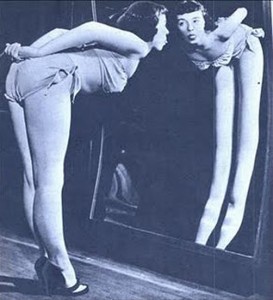
Cornelia Street Cafe and Observatory present a series of Observatory talks in the great borough of Manhattan: BODY AS FUNHOUSE MIRROR: Cultural Reflections On The Human Form. These talks will introduce Observatory to a new audience and give presenters the opportunity to update their work.
Produced by Wythe Marschall and Ted Enik. Originally produced at Observatory by Morbid Anatomy Library’s Joanna Ebenstein. Thanks to our hosts, Cornelia Street Cafe, and our presenters: Amy Herzog, Sharon Shattuck, and Mark Dery.
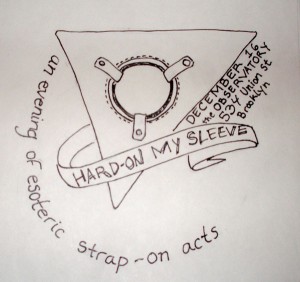 By Olivia Warner and Collaborators By Olivia Warner and Collaborators
Date: Friday, December 16
Time: 8:00 PM
Admission: $5
Presented by the Hollow Earth Society
A loose collective of Brooklyn artists, musicians and deviants present to you “Hard-On My Sleeve,” a show featuring bizarre, esoteric, and outlandish strap-on harnesses. The show is arranged in a few short vignettes, each scene depicting a painstakingly crafted harness in a cabaret of prosthesis. The vignettes take from myth, the bible, plant biology, ritual, and art history. The departure of utility from fantasy is pervasive through out these pieces, as the harnesses become detached from their original purpose. This show explores the play between body part and body fiction, and the shifts in role and representation.
The costumes are designed and executed by Olivia Warner. Olivia graduated from University of California Santa Cruz in Literature, and has very, very little formal training in sewing and design. She has worked with many theaters companies, circuses and performance artists from the tide pools of California to cesspools of New York City. You can view some of her previous shows at http://hovensaoil.wordpress.com/
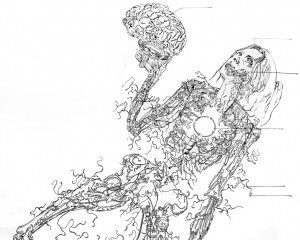 An illustrated lecture on monster identity with artist George Pfau An illustrated lecture on monster identity with artist George Pfau
Date: Monday, November 7
Time: 8:00 PM
Admission: $5
Presented by the Hollow Earth Society
Join us as George Pfau presents a slideshow-lecture juxtaposing clips from films and videogames with diagrams, animations, and other images to examine how zombies are portrayed in pop-culture and in the art world.
Pfau poses questions and criticisms about how the word zombie gets attributed to real-life people who exist in in-between states. In one anchoring clip, from the film Zombieland (2009), a character describes a hostile zombie as a “feverish, homeless, cannibal.” The aim is to draw focus toward the zombie as a visually complex, in-between body that has a lot to teach about contemporary fears surrounding contagion, death, recognition, and the loss of selfhood.
George Pfau grew up in San Francisco, received a Bachelor’s Degree from New York University, and in 2010, an MFA from California College of the Arts, where he received the Dennis Leon Award. In 2010 he was an artist in residence at the Wassaic Project, in Wassaic, New York, at the Vermont Studio Center, and also in Salzburg, Austria, as winner of the Daisy Soros Fine Art Prize. At CCA, he wrote his thesis on the recognition, classification, layering and mapping of the human body as seen through the pop-cultural notion of the zombie. He is currently working on a new series of paintings, drawings, and videos relating to these ideas.
***
This is second event in the (Re)Considering the Monster series. The first was writer Stephen Aubrey’s Consider the Werewolf.
 A SCHOLARLY HALLOWEEN DIATRIBE… with music. A SCHOLARLY HALLOWEEN DIATRIBE… with music.
Date: Thursday, October 27
Time: 8:00 PM
Admission: $5
Presented by the Hollow Earth Society
Thereminist Kip Rosser will demonstrate why Halloween is the perfect time of year for a scholarly and irreverent evening of bizarre history and strange science, featuring live music played on the weirdest instrument on the planet. The theremin was the world’s first electronic instrument, the first amplified instrument, and the original synthesizer. Today, it remains the only instrument ever invented that’s played without being touched.
It’s just around the corner: All Hallows’ Eve—the pagan new year, Samhain (pronounced “Sa-Wen” by everyone except the witches on True Blood). The time when the veil between our world and the world of spirits is the thinnest… so…
Break out the bad horror and crappy sci-fi movies! The cheesier the better. Why? Because you get to hear “that sound,” that quintessential creepy, rubber monster, spaceship, mad scientist, someone’s-sneaking-up-on-you, alien attack, psycho stare, insane, hypnotic, ethereal, shadow-of-gnarled-hands-across-your-face-almost-at-your-throat sound… (You know that sound.)
It’s a theremin that makes “that sound.”
There’s a story, a history behind that sound. It’s the history of a Russian scientist and the story of his revolutionary invention: the theremin.
Kip Rosser is considered one of the most accomplished thereminists playing today, performing his solo concerts and collaborating with musicians around the world. For reviews, photos, music samples, and upcoming performances please visit www.performancekr.com.
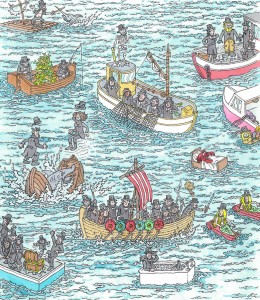 WHERE’S AHAB? WHERE’S AHAB?
Or, embracing the tunnel-visioned, grudge-holding, Mr. Grumpypants blasphemer in us all
(A three-part study of transcendental fury)
With Ted Enik, Daniel Grushkin, & Wythe Marschall
Date: Thursday, August 18
Time: 8:00 PM
Admission: $5
Presented by The Hollow Earth Society
Captain Ahab—the best, first, and darkest dude with a zigzag lightning-bolt scar on his face. Moby-Dick—the unknowable Leviathan.
But wait—don’t forget: Old King Ahab and the God of the Israelites. Quixote and his enchanted armies of giants. The Old Man and the Sea. The Coyote and the Roadrunner. Quint and the Great White. Ripley and the alien broodmother. Kahn and the Enterprise…
Each of us seeks her own Whale. Each of us is susceptible to the obsessive focus of the one-legged captain. We seek an object, perhaps—a talisman that will complete us—or a secret knowledge that will give us power and bring us closer to the Transcendent. We pick at a spiritual scab.
Or perhaps we seek revenge, because to overcome and finally own the object of an obsession plugs a gaping void in our psyche. “That dog has it in for me…” “Old Whiskers is the oldest meanest catfish in the lake. Nobody’ll ever hook him!”
But why do we see in our objects of obsession an intelligence, a clever and evil intentionality that they consummately do not possess? Melville:
All visible objects, man, are but as pasteboard masks… If man will strike, strike through the mask! …I’d strike the sun if it insulted me.
On August 18, we strike through the mask of Ahab himself: Join illustrator Ted Enik and writers Daniel Grushkin and Wythe Marschall as they offer three Ahabs, three perspectives on obsession in literature, and three curious readings of American’s greatest myth. Find out why you know the character having never read the book.
Our strikings (and sea shanties) will entertain and inform both those who have read Moby-Dick and those who have not yet done so. (In fact, there’s a wonderful one-minute-long version of the classic novel on YouTube.)
For who among us has not sought a personal Grail and failed? Who among us can read Ahab’s lyrical musings on the whale and not feel a twinge of shared guilt—a pinprick suspicion that we too have at some point, atop one object of obsession, piled up “all the general rage?”
All that most maddens and torments; all that stirs up the lees of things; all truth with malice in it; all that cracks the sinews and cakes the brain; all the subtle demonisms of life and thought; all evil, to crazy Ahab, were visibly personified, and made practically assailable in Moby-Dick. He piled upon the whale’s white hump the sum of all the general rage and hate felt by his whole race from Adam down; and then, as if his chest had been a mortar, he burst his hot heart’s shell upon it.
***
Kid’s book artist/author, Ted Enik (www.tedenik.com), who isn’t entirely convinced about reincarnation, must have been some sort of sailor-whaler person in a past life. What else would explain his possessing a button concertina, a collection of shantyman’s tunes, and a foul-weather love of Mother Ocean?
Daniel Grushkin is a freelance journalist who covers the cross-section of science, biotechnology and culture. His articles have appeared in The New York Times, Businessweek, National Geographic Adventure, Popular Science, and Scientific American. He is co-founder of Genspace, the world’s first community laboratory focused on biotech education and exploration. The white whale has thus far eluded him.
Wythe Marschall (The Hollow Earth Society, Observatory) is a writer, artist, and lecturer for the English department of Brooklyn College. Wythe’s stories and essays have appeared in McSweeney’s Quarterly Concern and elsewhere. With artist Ethan Gould, Wythe’s first book is Suspicious Anatomy, currently available online (suspiciousanatomy.com) and at fine bookstores in New York City.
 A Speculative Genealogy of Metaphortean Research: A Speculative Genealogy of Metaphortean Research:
An illustrated lecture with Carl Diehl, Metaphortean Researcher
Date: Monday, May 30
Time: 8 PM
Admission: $5
Presented by The Hollow Earth Society
For nearly half a decade, Portland based artist Carl Diehl has researched and developed works under the auspices of “Metaphortean Research.”
The neologized term “Metaphortean” combines “metaphor” and “Fortean,” the latter term denoting strange, mysterious events popularized in the publications of the independent early 20th century researcher Charles Fort. An eccentric champion of anomalous phenomena, Fort collected facts that had allegedly been excluded, rejected, or ignored by established science because they were unexplainable. While Fort focused on the arbitrary borderlines between accepted and denied explanations, Metaphortean Research puzzles the shifting values associated with new and obsolescent media.
Persistent, if marginal, accounts of Bigfoot, UFOs, and other Fortean events will sometimes be implicitly compared with acts of technological re-use. Alternately, ghosts and monsters may be explicitly scrutinized in terms of their own hypothetical media consumption habits. Putting audacity before caution, this speculative genealogy of Metaphortean Research features short videos and performative para-lectures on topics including atemporal network culture, the perceived obsolescence of blurry sasquatches, and wayward zombie satellites. More information: www.metaphorteanspace.com and www.carldiehl.com.
Metaphors, puns and neologisms are prominent devices within Carl Diehl’s practice as an artist and writer. He extends the function of these literary tools into an audio-visual context to discover the nuanced possibilities of time-based media. Especially fascinating to Diehl are the unexpected aberrations that sometimes disrupt the intended output of an audio-visual device. Metaphortean Research mobilizes a slow disclosure of malfunction and a broad range of formal intervention at the level of image, text and sound. Diehl has presented these works widely, including Transmediale in Berlin, the International Symposium for Electronic Art in Singapore, and Other Cinema in San Francisco.
|
 A Short Film Screening with Filmmaker and Ecologist Sharon Shattuck
A Short Film Screening with Filmmaker and Ecologist Sharon Shattuck Cornelia Street Cafe and Observatory present a series of Observatory talks in the great borough of Manhattan: BODY AS FUNHOUSE MIRROR: Cultural Reflections On The Human Form. These talks will introduce Observatory to a new audience and give presenters the opportunity to update their work.
Cornelia Street Cafe and Observatory present a series of Observatory talks in the great borough of Manhattan: BODY AS FUNHOUSE MIRROR: Cultural Reflections On The Human Form. These talks will introduce Observatory to a new audience and give presenters the opportunity to update their work. New theatrical works by Ariel Stess & Claire Moodey
New theatrical works by Ariel Stess & Claire Moodey LARGER OBJECTS CAST:
LARGER OBJECTS CAST: An illustrated lecture by artist Alastair Noble on the ancient civilizations of darkest Peru
An illustrated lecture by artist Alastair Noble on the ancient civilizations of darkest Peru A class facilitated by Jonathan Basile
A class facilitated by Jonathan Basile

 By Olivia Warner and Collaborators
By Olivia Warner and Collaborators An illustrated lecture on monster identity with artist George Pfau
An illustrated lecture on monster identity with artist George Pfau A SCHOLARLY HALLOWEEN DIATRIBE… with music.
A SCHOLARLY HALLOWEEN DIATRIBE… with music. WHERE’S AHAB?
WHERE’S AHAB? A Speculative Genealogy of Metaphortean Research:
A Speculative Genealogy of Metaphortean Research: